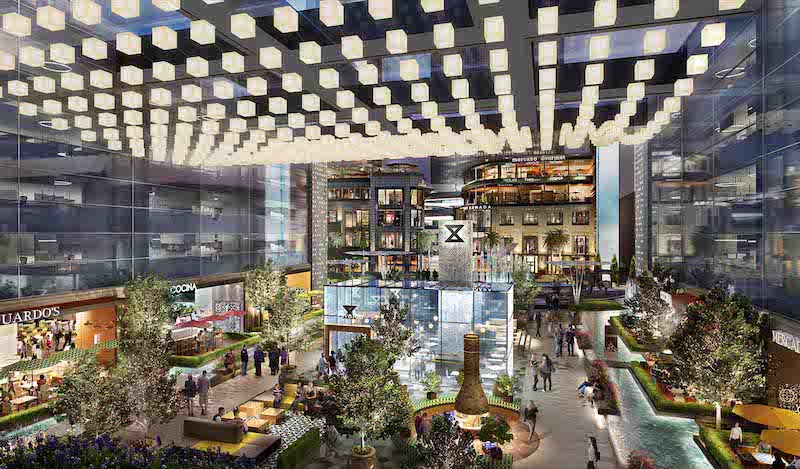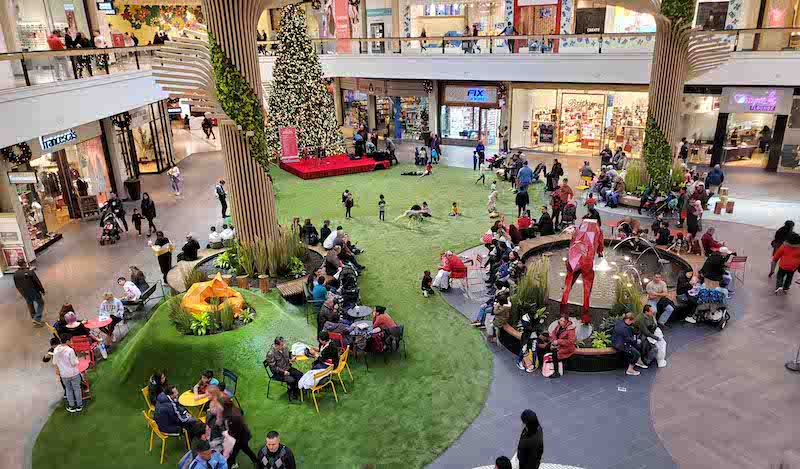Malls are important, they’re some of the most visited places in our communities, frequented by billions of people around the world every year. To survive, however, they need to become places that are about much more than retail transactions.
Honestly, malls are in decline.
Hundreds of American malls shuttered after the 2007-09 recession. And retail researchers estimate 25% of America’s roughly 1,000 remaining large malls will close over the next 3 to 5 years.
What happened?

Malls rely on department stores and hero retail tenants as anchors that draw people and support hundreds of other retail tenants nearby. These anchor tenants didn’t anticipate how online shopping would compete with their mall presence. In many cases, they didn’t adjust to omnichannel or improve the physical customer experience to remain essential and competitive. Late to adjust to a new online shopping reality, they saw a decline in the customer experience, traffic, and sales.
Right now, the industry is in turmoil.
The pandemic, which closed malls temporarily and pushed consumers to eCommerce and overnight delivery, has accelerated the downward trend for retail malls. What we thought would happen over the next 5 or 10 years is happening now.
The once stalwart retailers that were formerly reliable anchor tenants are now entering bankruptcy. UBS researchers say that 9% of the 80,000 retail stores in the US will shutter across the country by 2026. They predict eCommerce sales will rise to 27% of the total retail sales by then, up from 18% today. Bad news for retailers signals bad news for struggling malls. It will eventually drive significant openings in mall real estate.
Why malls still matter
But malls are highly public environments. For communities that don’t have urban or historic downtowns, they function as a heart and central gathering place. They’re the closest thing to a public forum, a place to see and be seen. When the mall starts to decline, these cities and towns lose a gathering space—and businesses and jobs, too.
But malls are not completely going away. They have a lot going for them. They’re well located and still suited to provide incredible experiences. In fact, the decline of the traditional mall represents an opportunity.
Opportunity to shift
Many of the malls that remain have lost their anchor tenants and hundreds of surrounding lessees.
This may sound bleak. But it’s also a chance for mall owners to refresh and redevelop. Freed from leases, in the extreme case, they can “demall,” taking out a department store or anchor tenant. This unlocks all kinds of possibilities for serious redevelopment.

Phenomenal candidates for redevelopment
Malls have a lot going for them as places with assets and infrastructure, sometimes even public-transport access. They are semi-independent properties in the sense that they have their own infrastructure including access to water, power, and lots of parking. Malls are often well located, frequently at the intersection of well-traveled highways.
Mall reuse—now is the time
It’s a tumultuous time. Whomever falls asleep at the wheel will lose out. The mall owners that are taking initiative will win in the long run. Some owners want to simply demolish and begin again.
Because of its all-weather access, the indoor mall itself as a sort of a conglomerate of stores and an enclosed environment with a food court (reborn as a food hall) will continue to be a relevant model. But it won’t look the same. The model for redevelopment will depend on what the local market can support.
Content and messy vitality
When it comes to the future of malls, content is king. Content refers to the look and feel of the space but also what happens there. Content comes in the form of art, patterning, people, places, information, entertainment, culture, video events, data, sound, hospitality, and texture.
As Robert Venturi said, “I am for messy vitality over obvious unity.” This messy vitality characterizes places where life happens. To succeed, malls need to become places that are messy, engaging, and vital.
If it’s not about retail, what’s it about?
So, the war is over. Overnight delivery won, and physical retail is no longer about the distribution of goods. The physical store is about building brand equity—it’s a place where brands make a personal connection with the consumer. So, the mall itself needs to build brand equity—a memorable connection with the consumer that communicates quality.
Our design work for malls and retail outlets has shifted to focus on storytelling, interweaving elements that emotionally connect people to place. There are new ground rules for malls to create vitality.
Three crucial attributes for malls
1. Content is the new anchor. Bringing in content is a critical solution. It’s about fulfilling people’s needs in multiple ways beyond the usual goods and services. This can be expressed in everything from design to events. Content should be sustainable, promote wellness, inspire, and ultimately add value to people’s lives.
2. Experience is the brand. There’s nothing worse than a sea of sameness throughout a 2-million-square-foot environment. It’s deadly for the imagination. It doesn’t engage. So, it’s critical that tomorrow’s malls offer visitors a series of experiences—a journey from one side of the mall to the other.
3. Food, beverage, and entertainment are the magnets. Food and beverage services are critical for malls. Malls that don’t invest in creating an extraordinary food presence and entertainment are going to die. They’ll need to devote upwards of 30% of their leasable area to food and entertainment, which is a huge lease strategy shift.

Repurposing and mini cities
Repurposing anchor spaces in malls as gyms or for healthcare clinics is possible and many will do fine. But we’re also seeing a trend emerging for temporary uses within vacated anchor spaces—think pop-up events, exhibits, or seasonal retail.
But there are other solutions that are completely new uses for the space that may require us to tear down the anchor tenant or big box and rebuild. Sometimes it’s not feasible to redo an existing box.
We will see entertainment, coworking, hotels, offices, even residential—any use that draws people inside—in the mall. Mall redevelopments are primed to solve a lot of the residential needs of cities. After all, there’s a lot of land devoted to many of these malls, and all the infrastructure is in place. By varying the uses and bringing in people, you’re creating little cities. To hit critical mass, they need to feature uses like grocery stores, another anchor that can pull more people into these places.
Malls have been among our most popular public environments for decades, connecting with millions of people every year. Malls that can add value to our lives will be the places we want to be associated with, the places we come to and stay awhile because they’re about more than completing a transaction. Rather than lamenting the demise of what was the retail mall, we’re invigorated by the opportunity to reimagine what they could be—essential, vital, and engaging places once more.
More from Author
Stantec | Jul 18, 2024
Why decarbonizing hospitals smartly is better than electrification for healthcare design
Driven by new laws, regulations, tariffs, ESG goals, and thought leaders in the industry itself, healthcare institutions are embracing decarbonization to meet 2050 goals for emissions reductions.
Stantec | Jun 18, 2024
Could ‘smart’ building facades heat and cool buildings?
A promising research project looks at the possibilities for thermoelectric systems to thermally condition buildings, writes Mahsa Farid Mohajer, Sustainable Building Analyst with Stantec.
Stantec | Jun 8, 2024
8 ways to cool a factory
Whichever way you look at it—from a workplace wellness point of view or from a competing for talent angle—there are good reasons to explore options for climate control in the factory workplace.
Stantec | Apr 18, 2024
The next destination: Passive design airports
Today, we can design airports that are climate resilient, durable, long-lasting, and healthy for occupants—we can design airports using Passive House standards.
Stantec | Mar 18, 2024
A modular construction solution to the mental healthcare crisis
Maria Ionescu, Senior Medical Planner, Stantec, shares a tested solution for the overburdened emergency department: Modular hub-and-spoke design.
Stantec | Nov 20, 2023
8 strategies for multifamily passive house design projects
Stantec's Brett Lambert, Principal of Architecture and Passive House Certified Consultant, uses the Northland Newton Development project to guide designers with eight tips for designing multifamily passive house projects.
Stantec | Apr 10, 2023
Implementing human-centric design in operations and maintenance facilities
Stantec's Ryan Odell suggests using the human experience to advance OMSF design that puts a focus on wellness and efficiency.
Stantec | Jul 6, 2022
5 approaches to a net zero strategy that communities can start right now
Whether your community has started on a plan or is still considering net zero, now is the time for all of us to start seriously addressing climate change.
Stantec | Feb 14, 2022
5 steps to remake suburbs into green communities where people want to live, work, and play
Stantec's John Bachmann offers proven tactic for retrofitting communities for success in the post-COVID era.
Stantec | Feb 8, 2022
How gaming technology is changing the way we design for acoustics
Adding 3D sound from gaming engines to VR allows designers to represent accurate acoustic conditions to clients during design.
















